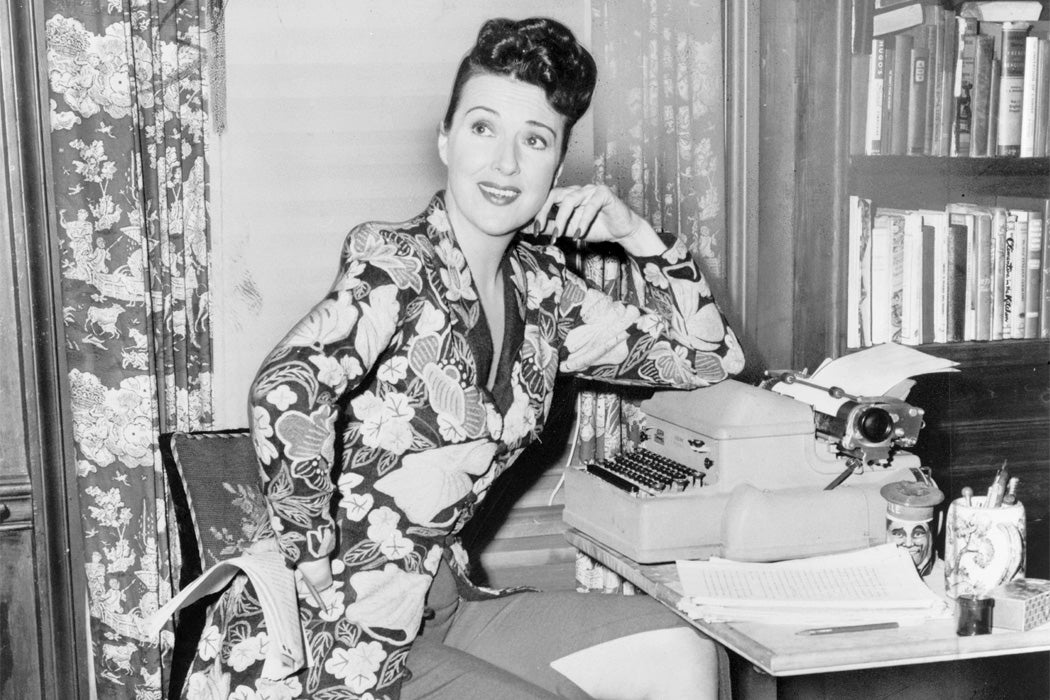In 1941, Gypsy Rose Lee, the most famous burlesque star in the country, published a murder mystery called The G-String Murders. As the title not so subtly suggests, the book’s milieu was one Lee knew well: the bump and grind of burlesque houses. The book’s “narratrix” was named Gypsy. The tale of backstage murder had other characters named Gee Gee Graham, Lolita LaVern, Biff Brannigan, and Siggy, the G-string salesman. Revived in 2005 by the Femmes Fatales imprint of The Feminist Press, it remains in print.
Writes scholar Maria DiBattista, “The book is still readable today for its brisk, sometimes witty, and unapologetically randy account of the personal and professional jealousies, the routines and props (the grouch bags, pickle persuaders, and, of course, G-strings), even the substandard plumbing common to a life in burlesque.” Soooo… who wrote it?
Immediately upon the announcement of the publication of Lee’s book, kibitzers asked who the ghostwriter was. Even then it was assumed that celebrities didn’t write—or even read—their “own” books. (The novel’s Wikipedia page notes that there is a question of “authorship in dispute.”)
But the publisher, Simon and Schuster, had a ready comeback: the letters Lee had sent to her editors during the course of the mystery’s writing proved that Lee’d penned the book herself. They published these as a separate pamphlet, part of a reveal-all publicity campaign. The letters, DiBattista says, chart “Lee’s growing commitment to a genre that is quite strict in demanding a knowledge of, and respect for, the rules of detection.” (The letters are also fun to read: “Dammit I love furriers! Aside from the hand kissing they really make like gents.”)
Born Rose Louise Hovick, Gypsy Rose Lee and her sister grew up in vaudeville. Her sister would go on to have a career in Hollywood, theater, and TV under the name June Havoc. Lee became what H. L. Mencken called, in her honor, an “ecdysiast.” This was a humorously ginned-up, biologically-inspired name for the art of the taking off clothes on stage like a snake shucks its skin.
In the letters, Lee tells how she wrote the novel between acts. After her fifth show of the day, though, she was generally pooped. She wrote in the bathtub—it took an hour to soak off the body paint. She wrote “half dressed,” as depicted in the illustration of the author for the book cover. “What is Burlesque without a belly roller?” she asks in one letter, trying to get the atmosphere and the characters right. She signed the missives off with things like “The girl with the diamond studded navel” and “The naked genius.”
She even suggested a book cover design: a lift-up flap on the cover in the shape of a skirt, with a “silver flitter” G-string underneath. Simon and Schuster demurred on this marketing brainstorm.
Weekly Digest
About her fictional murderer, Lee wrote “I wanted the reader to sympathize with him. A great many will probably think it’s a good idea to clean up the Burlesque theatre, anyway.”
She bemoaned being too tired to write after a night’s work and that backstage was not a place to find intellectual stimulation. “Being so far away from people that I can discuss plot, motive, blood, and bodies with, I get stale.”
But at least she could go home to 7 Middagh Street in Brooklyn. There her housemates included W.H. Auden, Carson McCullers, Benjamin Britten, and Jane Bowles, among others. What a cast! Much has been written about that extraordinary ménage, but, alas, no murder mysteries.







